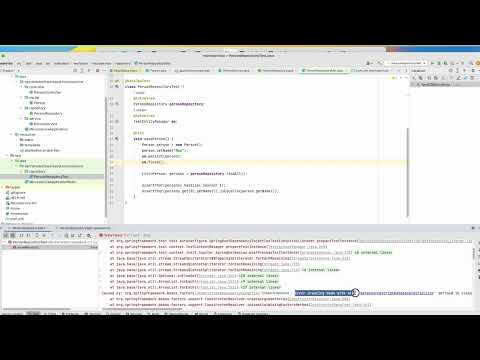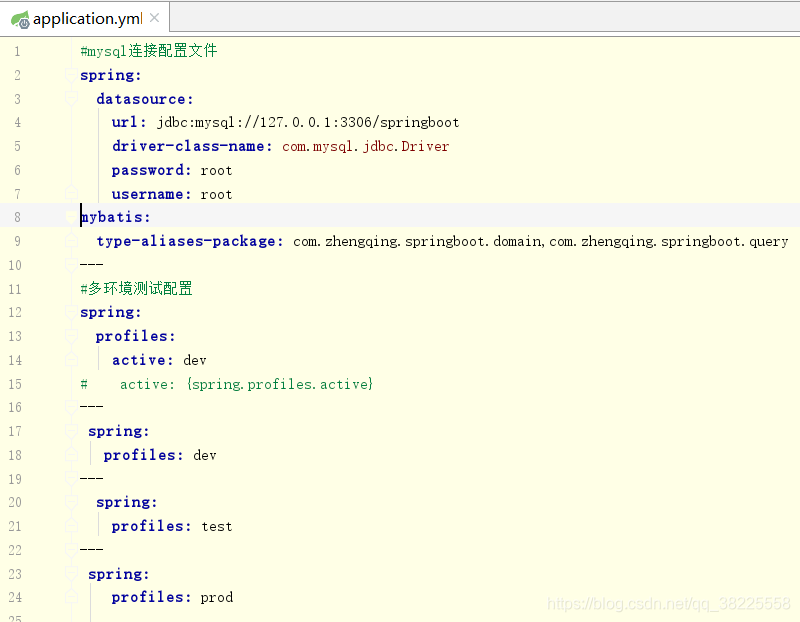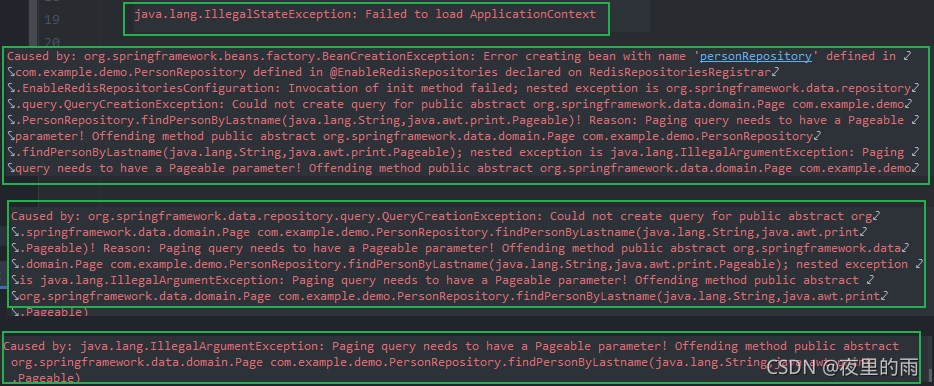Java Lang Illegalstateexception Failed To Load Applicationcontext
The java.lang.IllegalStateException is a type of exception that is thrown when a method is called at an inappropriate time or when the internal state of an object is not suitable for the method to be executed. In simpler terms, it indicates that the program is in an illegal or unexpected state.
Explanation of ApplicationContext in Java:
In Java, the ApplicationContext is a part of the Spring Framework and it represents the container that holds all the objects, or beans, in an application. It provides the necessary configuration details required to initialize the beans and wire them together. The ApplicationContext is responsible for managing the lifecycle of these beans and resolving the dependencies between them.
Understanding the Failed to Load ApplicationContext Exception:
The “Failed to Load ApplicationContext” exception occurs when the application fails to load the ApplicationContext during its startup phase. This exception usually occurs when there is an issue with the configuration of the application or when there are missing dependencies required for the ApplicationContext to be loaded successfully.
Common Causes of Failed to Load ApplicationContext Exception:
1. Incorrect Configuration: One of the most common causes of this exception is incorrect configuration settings. This can be due to incorrect property values, incorrect XML or Java configuration, or missing configuration files.
2. Missing Dependencies: Another common cause is the absence of required dependencies. If the application requires certain libraries or modules to be present, but they are not found, the ApplicationContext will fail to load.
3. Classpath Issues: If the necessary classpath is not correctly set up, the ApplicationContext may fail to load. This can happen if the required libraries or configuration files are not in the classpath.
4. Bean Initialization Failures: If there are issues with initializing certain beans within the ApplicationContext, it may fail to load. This can be due to improper configuration of the beans or errors during their instantiation.
Troubleshooting Steps for Failed to Load ApplicationContext Exception:
1. Checking Dependencies and Classpath for ApplicationContext loading:
Ensure that all the required dependencies for the application are correctly specified in the project’s build files. Check if the necessary libraries are present in the classpath. Verify that the correct versions of the dependencies are being used.
2. Verifying Configuration File(s) for ApplicationContext:
Inspect the configuration files (such as XML or Java configuration) to ensure they are correctly written and not missing any required settings. Verify that the configuration files are in the correct location and can be loaded by the application.
3. Analyzing Stack Trace and Error Logs for Failed to Load ApplicationContext Exception:
Examine the stack trace and error logs to get more information about the cause of the exception. Look for any specific error messages or warnings that can help identify the issue. Use a debugger or logging framework to gather more detailed information.
4. Resolving Failed to Load ApplicationContext Exception through debugging and code analysis:
Debug the application and step through the code to identify any specific areas where the exception is being thrown. Analyze the code to find any potential misconfigurations or issues with bean initialization. Make necessary changes to fix the problem.
FAQs:
Q: What is a Failed to Load ApplicationContext Spring Boot test?
A: A Failed to Load ApplicationContext Spring Boot test is a test case that fails to load the ApplicationContext while running Spring Boot tests. This can occur due to various issues such as incorrect test configuration or missing dependencies.
Q: What is @Datajpatest failed to load applicationcontext?
A: @Datajpatest is an annotation used for testing repositories in Spring Boot applications. If the test fails to load the ApplicationContext while using this annotation, it may indicate issues with the configuration or dependencies required for the testing framework.
Q: What does “Applicationtests contextLoads illegalstate Failed to load ApplicationContext” mean?
A: This error message indicates that the ApplicationContext failed to load during the execution of application tests. It suggests that there might be configuration issues or missing dependencies that need to be addressed.
Q: What should I do if my application fails to start with Spring Boot?
A: If your application fails to start with Spring Boot, check the error logs for any specific error messages that can help identify the issue. Ensure that the necessary dependencies are correctly specified and that the configuration files are set up properly.
Q: Why does WebMvcTest fail to load ApplicationContext?
A: WebMvcTest is used for testing Spring MVC controllers. If it fails to load the ApplicationContext, it may suggest issues with the configuration or dependencies required for the testing framework.
Q: How do I write a unit test for a service in Spring Boot?
A: To write a unit test for a service in Spring Boot, you can use the @SpringBootTest annotation along with JUnit or another testing framework. This allows you to load the ApplicationContext and test the service methods.
Q: What is Spring Boot-starter-test?
A: Spring Boot-starter-test is a Maven dependency that provides all the necessary testing frameworks and libraries for writing tests in a Spring Boot application. It includes JUnit, Spring Test, and other testing tools.
Q: What should I do if injection of autowired dependencies failed with java.lang.IllegalStateException?
A: If the injection of autowired dependencies fails with java.lang.IllegalStateException, check the configuration of the dependencies and ensure that they are correctly defined and wired. Verify that the necessary annotations (@Autowired, @Component, etc.) are used correctly. Analyze the stack trace and error logs to identify the specific cause of the exception.
Datajpatest Failed To Load Application Context For Junit Test Of Repository
Keywords searched by users: java lang illegalstateexception failed to load applicationcontext Failed to load ApplicationContext Spring Boot test, @Datajpatest failed to load applicationcontext, Applicationtests contextLoads illegalstate Failed to load ApplicationContext, Application failed to start spring boot, WebMvcTest Failed to load ApplicationContext, Unit test service Spring Boot, Spring Boot-starter-test, Injection of autowired dependencies failed
Categories: Top 13 Java Lang Illegalstateexception Failed To Load Applicationcontext
See more here: nhanvietluanvan.com
Failed To Load Applicationcontext Spring Boot Test
What is “Failed to load ApplicationContext” error?
When running Spring Boot tests, you might encounter an error message stating “Failed to load ApplicationContext”. This error typically occurs during the application context initialization phase when the test framework tries to load and configure the Spring application context.
The application context is a crucial component of any Spring-based application. It represents the configuration and runtime environment for an application, containing the beans and their dependencies required for the application to function properly.
Reasons for “Failed to load ApplicationContext” error:
1. Configuration Issues:
One common cause of this error is incorrect or missing configuration files. Ensure that your test class or test configuration includes the necessary annotations like @SpringBootTest or @ContextConfiguration. Additionally, verify that the configuration files, such as application.properties or application.yml, are present and properly configured.
2. Missing or Invalid Dependencies:
Another reason for this error could be missing or incompatible dependencies. Check your project’s build file (pom.xml or build.gradle) and ensure all required dependencies are included and compatible with each other. You can use tools like Maven or Gradle to manage your project’s dependencies and versions.
3. Test Class Location:
The location of your test class might also cause this error. Ensure that the test class is in the correct package or directory structure based on your project’s configuration or the default package structure for Spring Boot tests. An incorrect package or directory structure can result in the failure to load the application context.
4. Incorrect Test Scope:
Sometimes, this error occurs when tests are not scoped properly. By default, Spring Boot tests use the “test” scope, which is meant for testing isolated pieces of code. If you are testing components that require the full application context, make sure to annotate your test class or test method with @RunWith(SpringRunner.class) or @ExtendWith(SpringExtension.class), depending on your JUnit version.
Troubleshooting “Failed to load ApplicationContext” error:
1. Check Error Logs:
The error message often provides additional details about the cause of the failure. Look for any specific exception or stack trace in the error logs to get more information about the problem. Analyzing the error logs can help identify the root cause.
2. Review Configuration Files:
Double-check your configuration files, especially application.properties or application.yml, to ensure they are correctly configured. Verify that the necessary properties and values are present to establish a valid application context. If you have multiple configuration files, make sure they are correctly included or imported.
3. Validate Dependencies:
Ensure that all your project dependencies are correctly included and properly compatible with each other. Verify the versions and exclusions to rule out any conflicts. If you suspect a particular dependency causing the issue, try excluding it temporarily to identify if it resolves the problem.
4. Verify Test Annotations and Scopes:
Make sure your test class or method is appropriately annotated with the required Spring test annotations and scoped correctly. Annotating your test class with @RunWith(SpringRunner.class) or @ExtendWith(SpringExtension.class) allows the test framework to initialize and load the application context correctly.
5. Examine Classpath Issues:
Inspect your project’s classpath to ensure that all the required classes and resources are available. Missing class files or incorrect resource placements can cause issues while loading the application context. Consider cleaning and rebuilding your project to ensure a consistent classpath.
FAQs:
Q1. Can the “Failed to load ApplicationContext” error occur in production?
No, this error typically occurs during the testing phase and does not affect your production application. It indicates an issue with the test configuration or environment rather than your actual application.
Q2. How can I run Spring Boot tests in isolation without loading the entire application context?
To run tests in isolation, you can use the @MockBean annotation to mock or replace specific dependencies with test doubles. Additionally, you can specify a limited set of configurations using @ContextConfiguration or @TestConfiguration to load only the required components for testing.
Q3. I have made changes to my configuration or dependencies, but I still encounter the same error. What should I do?
In such cases, try cleaning your project and rebuilding it to ensure that all changes are appropriately reflected. Additionally, consider deleting any temporary files or cached resources that might affect the application context initialization.
Q4. Are there any alternative approaches to initialize the application context for Spring Boot tests?
Yes, apart from using @SpringBootTest, you can also use @MockMvc for testing the MVC layer, @DataJpaTest for testing JPA repositories, or @WebMvcTest for testing controllers. These annotations provide a more targeted approach to initialize the application context based on specific testing needs.
In conclusion, the “Failed to load ApplicationContext” error is a common stumbling block when working with Spring Boot tests. By understanding the possible causes and following appropriate troubleshooting steps, you can effectively resolve this issue and ensure the smooth execution of your tests. Remember to review your configuration files, verify dependencies, and correctly annotate and scope your test classes. With these measures in place, you can overcome the error and streamline your testing process.
@Datajpatest Failed To Load Applicationcontext
When working with the Spring Framework, one common issue that developers may encounter is the “Failed to load ApplicationContext” error message when running tests with the @Datajpatest annotation. This error can be frustrating to deal with, as it can prevent the tests from executing properly and cause delays in the development process. In this article, we will explore the possible causes of this error and provide solutions to fix it. Additionally, we will address some frequently asked questions related to this topic.
Understanding the error:
Before diving into the solutions, let’s first understand the error message. When running tests with the @Datajpatest annotation, the Spring Framework attempts to create an ApplicationContext that contains the required dependencies to execute the tests. However, when the ApplicationContext fails to load, the “Failed to load ApplicationContext” error is displayed. This error message can indicate a variety of underlying issues.
Possible causes and solutions:
1. Missing or incorrect dependency configurations:
One common cause of this error is missing or incorrect dependency configurations. Ensure that all required dependencies are correctly specified in your project’s build configuration (e.g., Maven or Gradle). Check for any missing or outdated versions of required libraries and update them accordingly.
2. Incompatible versions of dependencies:
Another potential cause is incompatible versions of dependencies. The Spring Framework relies on a specific set of dependencies, and mismatches can lead to the ApplicationContext failing to load. Review the compatibility requirements of your Spring dependencies and ensure they are aligned with each other. Use tools like Maven or Gradle to manage your dependencies and automatically resolve version conflicts.
3. Incorrect database configuration:
If your tests involve database interactions, improper database configuration can cause the ApplicationContext to fail to load. Verify that the database connection properties in your application configuration files (e.g., application.properties or application.yml) are correct. Ensure the database server is running and accessible.
4. Test configuration issues:
Check your test configuration files, such as the TestConfig class or properties specific to your test environment. Make sure they are correctly set up to provide the necessary context for the tests. Ensure that you have properly annotated your test classes and methods with Spring annotations, such as @RunWith(SpringRunner.class) and @ContextConfiguration.
5. Missing bean declarations:
If your tests rely on specific beans or components, ensure that they are correctly declared in the application configuration files or annotated with @Component, @Service, or related annotations. Missing or incorrect bean declarations can prevent the ApplicationContext from being properly loaded.
6. External resources not available:
Sometimes, the tests might depend on external resources, such as web services or messaging queues. If these resources are unavailable or inaccessible during the test execution, the ApplicationContext might fail to load. Ensure that any external resources are running and reachable in your test environment.
FAQs:
Q1. Why does the @Datajpatest annotation throw the “Failed to load ApplicationContext” error?
A1. The @Datajpatest annotation, provided by the Spring Data JPA module, triggers the loading of an ApplicationContext required for testing JPA repositories and related functionality. The error occurs when the ApplicationContext fails to load due to various underlying issues.
Q2. How can I debug the “Failed to load ApplicationContext” error?
A2. To debug this error, examine the stack trace provided in the error message. Look for any specific exceptions or error details that can help identify the root cause. Check for any missing dependencies, incompatible versions, or incorrect configurations.
Q3. I am using an embedded database for testing. Could that be the cause of the error?
A3. Yes, using embedded databases for testing is a common practice. However, incorrect configuration or compatibility issues with the embedded database can lead to the ApplicationContext failing to load. Double-check the configuration and ensure that the embedded database is correctly set up.
Q4. What should I do if none of the solutions mentioned above resolve the issue?
A4. If you have exhausted all the possible solutions and are still unable to resolve the error, consider reaching out to the Spring community forums or referring to the official documentation. Providing specific details about your project setup, dependencies, and error stack trace will help the community to assist you effectively.
In conclusion, the “Failed to load ApplicationContext” error in @Datajpatest can occur due to various reasons, ranging from missing or incorrect dependencies to improper configuration. By carefully reviewing and implementing the suggested solutions, you should be able to resolve this error and run your tests seamlessly.
Applicationtests Contextloads Illegalstate Failed To Load Applicationcontext
When working with application tests in the Java Spring framework, it is not uncommon to encounter an error message stating “Applicationtests contextLoads illegalstate Failed to load ApplicationContext.” This error can be frustrating and time-consuming to resolve, especially for developers who are relatively new to the framework.
In this article, we will delve into the reasons behind this error and discuss some possible solutions. We will also address some frequently asked questions to provide a comprehensive understanding of the topic.
What is ApplicationContext?
ApplicationContext is an important interface in the Spring framework that provides the configuration and services required to create and manage beans. It represents the Spring IoC (Inversion of Control) container, which is responsible for instantiating, configuring, and assembling the beans defined in the application.
What does “Applicationtests contextLoads illegalstate Failed to load ApplicationContext” mean?
The error message “Applicationtests contextLoads illegalstate Failed to load ApplicationContext” usually occurs when running tests for a Spring application. It indicates that the application’s context failed to load properly. In other words, the IoC container was unable to initialize and configure the beans required for the application’s test environment.
Why does this error occur?
There can be several reasons why the “Applicationtests contextLoads illegalstate Failed to load ApplicationContext” error occurs. Some common causes include:
1. Missing or incorrect dependencies: This error may occur if the necessary dependencies for the application tests are missing or not properly defined in the project’s pom.xml file or build.gradle file.
2. Configuration issues: It is essential to ensure that the application’s test configuration is correct. A misconfigured test configuration can result in the IoC container failing to load the ApplicationContext.
3. Issues with bean definitions: If there are errors or conflicts in the bean definitions within the Spring configuration files, the ApplicationContext may fail to load.
How can I resolve the “Applicationtests contextLoads illegalstate Failed to load ApplicationContext” error?
Resolving this error requires careful investigation and troubleshooting. Here are some possible solutions to consider:
1. Verify dependencies: Make sure that all the required dependencies for the application tests are correctly declared in the project’s build files. Check for any missing or conflicting dependencies and ensure they are resolved.
2. Check the test configuration: Verify the test configuration files, such as the “application-test.properties” or “application-test.yml” file, for any errors or misconfigurations. Pay attention to details like database connections, ports, and other necessary configurations specific to the test environment.
3. Review bean definitions: Inspect the Spring configuration files (typically XML or Java-based) for any errors or inconsistencies in the bean definitions. Ensure that the bean names, scopes, and dependencies are correctly defined and resolve any conflicts or missing dependencies.
4. Investigate log files: Check the application’s log files for any error or warning messages that might provide insights into the root cause of the ApplicationContext loading failure. These log files can be found in the project’s “logs” folder or in the console output during the test execution.
5. Debugging techniques: Make use of debugging techniques like setting breakpoints in the application tests or stepping through the code to identify the exact point of failure. This can provide valuable information to pinpoint the underlying issue causing the ApplicationContext loading failure.
FAQs:
Q: I have checked all the dependencies, configurations, and bean definitions, but I am still getting the “Applicationtests contextLoads illegalstate Failed to load ApplicationContext” error. What should I do?
A: If you have exhaustively checked all the probable causes mentioned earlier, it might be worth considering other factors such as compatibility issues with specific versions of Spring or conflicting configurations with other frameworks. It may be helpful to seek assistance from online developer communities or forums where experienced developers can provide guidance based on their own experiences.
Q: How can I avoid encountering this error in the future?
A: To avoid encountering the “Applicationtests contextLoads illegalstate Failed to load ApplicationContext” error, it is crucial to follow best practices in your application development process. Regularly update the dependencies, ensure accurate and up-to-date configurations, and perform thorough testing throughout your development lifecycle. Additionally, staying updated with the latest Spring framework releases and actively participating in the developer community can help you stay ahead of potential issues.
In conclusion, the “Applicationtests contextLoads illegalstate Failed to load ApplicationContext” error can be frustrating, but with careful investigation and troubleshooting, it can be resolved. By understanding the possible causes behind the error and following the suggested solutions, developers can overcome this hurdle and successfully load the ApplicationContext for application tests in the Java Spring framework.
Images related to the topic java lang illegalstateexception failed to load applicationcontext

Found 46 images related to java lang illegalstateexception failed to load applicationcontext theme














































Article link: java lang illegalstateexception failed to load applicationcontext.
Learn more about the topic java lang illegalstateexception failed to load applicationcontext.
- Failed to load ApplicationContext from Unit Test: FileNotFound
- Failed to Load ApplicationContext for JUnit Test of Spring …
- How to fix `Failed to load ApplicationContext` in Spring (Boot …
- Failed to load ApplicationContext for … – GitHub
- java.lang.IllegalStateException: Failed to load … – Upokary
- ERROR-java.lang.IllegalStateException: Failed to load …
- Failed to load ApplicationContext by: org.springframework …
See more: nhanvietluanvan.com/luat-hoc